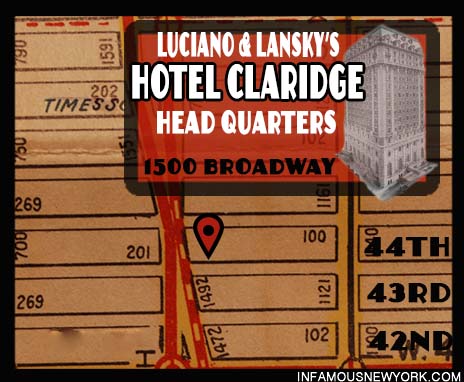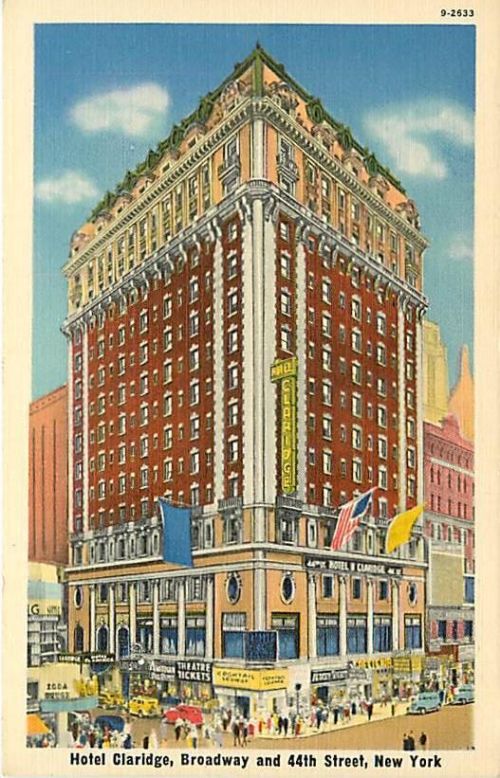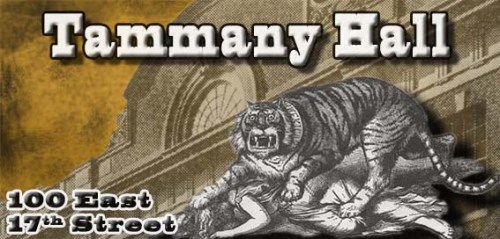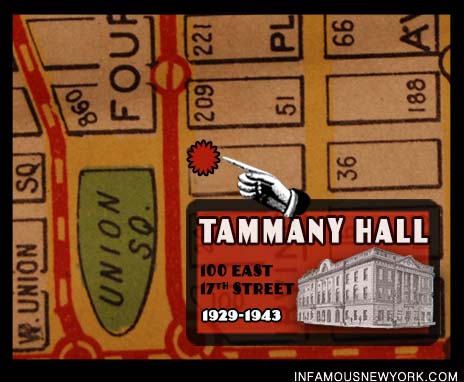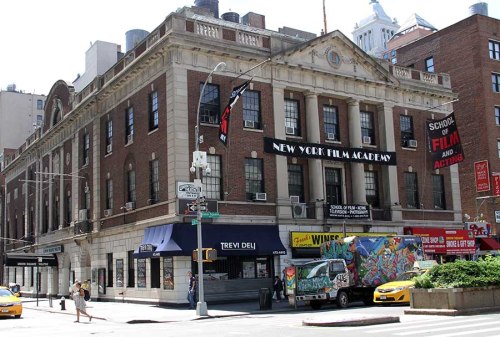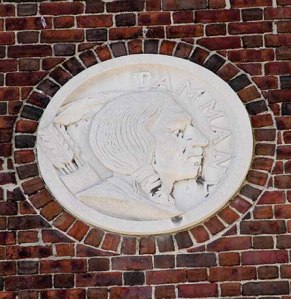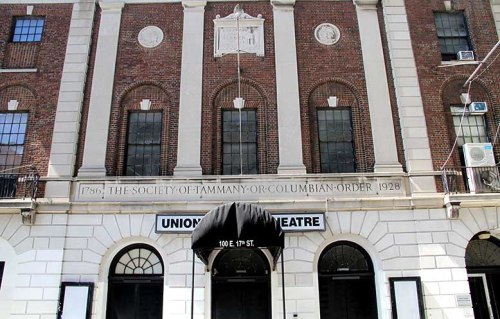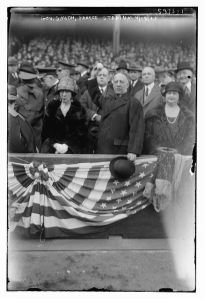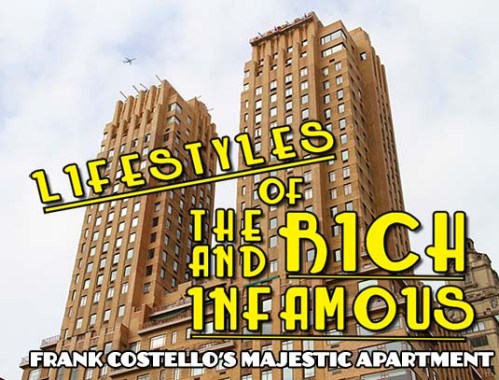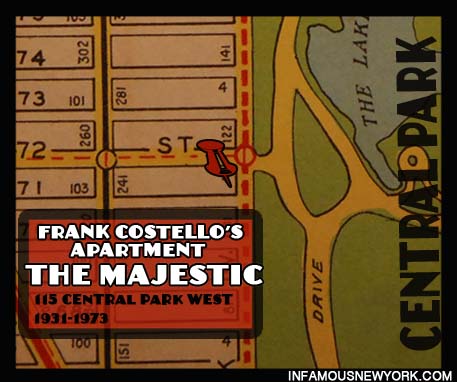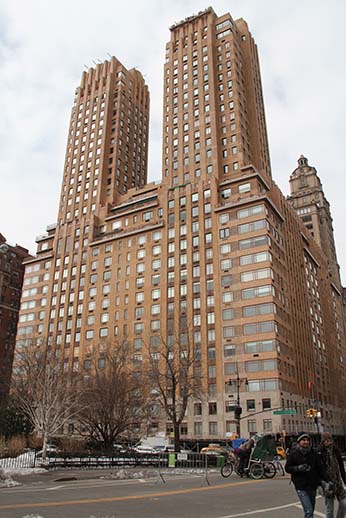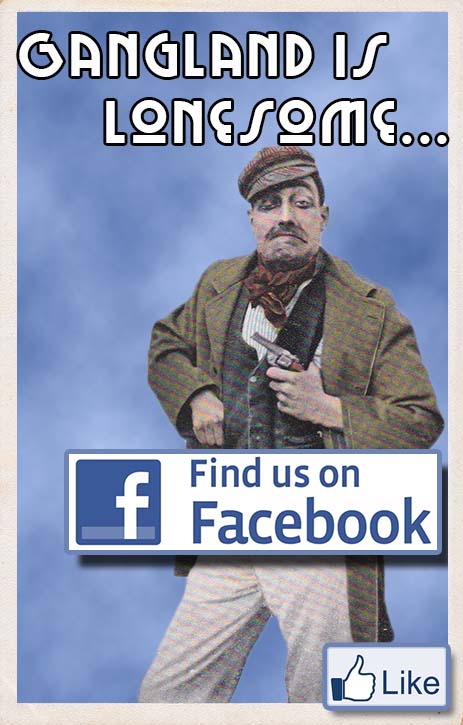Location: 1500 Broadway
Status: Demolished
They called themselves the Broadway mob. Members of the gang rubbed shoulders with high society, supplying the most exclusive speakeasies in New York with top-shelf, uncut booze. From their offices at the now demolished Hotel Claridge, located at 1500 Broadway, Meyer Lansky, Lucky Luciano, Bugsy Segal and Frank Costello would go from street gang to the masters of dry New York, making themselves multi-millionaires in the process.
Located in the heart of Times Square, on the east corner of 44th and Broadway, the Claridge Hotel was built in 1910 and according to the 1917 Real United States and Canada Pocket Guide,
“ Claridge’s Hotel, formerly Rector’s…was the great theatrical and bohemian after-theater restaurant…”
By 1922, Orwell Maximillian Zipkes purchased the hotel, adding a two-story arcade with shops and offices that Lansky, Luciano, Segal and Costello would use to build their empire.
Like a league of extraordinary criminals, the gang’s success came from the Broadway Mob’s remarkably diverse hoodlum resumes. Costello was the talker, forging the alliances with Tammany Hall that allowed the mob to steal at will and carry concealed weapons, legally.
The psychopathic Bugsy Segal provided the muscle, killing and beating anyone who stood in their way. The bookworm, Lansky, existed as a behind the scenes strategist and human adding machine, making the gangsters wealthy beyond their wildest dreams. Its leader, the oldest member of the gang, was Lucky Luciano, a gangland heavy who oozed reptilian charm.
Lansky’s Law
Guided by Luciano’s charisma and Lansky’s financial acumen, the gang became rumrunners. They heisted furs and stuck-up banks to fund liquor shipments of the purist scotch in town, purchased from the Brain of Broadway, Arnold Rothstein.
The small time gangsters’ moxie captured A.R.’s attention, and an internship in crime ensued.
Meeting With The Mentor
Rothstein mentored the gang from his booth at Lindy’s, teaching them how to dress, how to speak and how to conduct themselves in high society. According to the Last Testament of Lucky Luciano, Luciano recalled:
“He [Rothestein] taught me how to dress…how to use knives and forks…about holdin’ a door open for a girl, or helpin’ her sit down…”
In exchange for the mentoring, Lansky, Luciano and Costello served as Rothstein’s muscle, protecting his alcohol and narcotics shipments.
Purist Booze in Town
They travelled abroad as Rothstein’s purchasing agents, buying direct from distilleries in Scotland, keeping the Stork Club, The Silver Slipper, The 21 Club and the rest of Broadway’s high-end speakeasies swimming in hooch.
Pet Gangsters
By the height of prohibition, Pet gangsters were all the rage, and Luciano, Costello, Lansky and Siegel were the coolest mob in town. Suave, wealthy and deadly, they dated Ziegfeld Girls and slept with heiresses, earning them a privileged spot as the darlings of New York high society.
Luciano recalled:
“Within a year, we was buyin’ influence all over Manhattan, from lower Broadway all the way up to Harlem.”
Mafia Talent Scouts
But the Broadway Mob had other, less reputable, admirers. A secret criminal society mostly unheard of in America, known as the Mafia, had their eyes on Luciano, the only Sicilian member of the gang.
Both the Masseria Crime Family and the Maranzano Crime Family knew that whomever controlled Luciano, controlled the Broadway Mob and their fat bankrolls and political connections. Masseria would eventually win Luciano’s loyalty. He was then upgraded to a floor of suites in the Hotel Pennsylvania, but for the rest of his life in American; however, Luciano maintained an unofficial office at the Hotel Claridge. The hotel was demolished in 1972.
